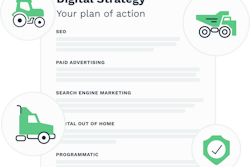Change Your Corporate Culture To Enable Change

“Good chemistry with the guys” is the best most do. However, the meeting’s focus on innovation was essential for all players in today’s market.
“Innovate or die” is not a new thought. But, innovation requires companies to change and unfortunately, most can’t do much more than fine tune their past.
How do we change the way we have been trying to change?
What if we develop a “corporate culture” that “enables” change to happen? The “fail forward faster” theory gaining popularity today suggests that we should try some necessarily imperfect experiments to learn as much as we can in the shortest time for the lowest total cost.
Here are two key questions to seed the effort:
What are the specific, organizational “antibodies” that have killed past change initiatives?
What if we could name those specific, anti-change rules and behaviors; explore the unspoken, dysfunctional assumptions (and motives) behind them; and then, re-engineer them to create a climate that enables innovation and change?
Perhaps a first step to thinking about innovation as a culture component is to define the term. I turned to distribution guru Bruce Merrifield for a pithy definition: “The profitable implementation of strategic creativity.”
Here’s an immediate concern: many heavy-duty distributors and suppliers are at best mediocre at all four elements — strategy, creativity, execution and making money — within this definition.
Fixing them all may seem daunting, but both strategy and creativity are usually limited only by company and industry groupthink (unless management has consciously surfaced, defined and then modified the collective, mindset of the team).
Start asking out loud, “What are the assumptions and facts that have lead us to think and do (some conventional practice)?” If all are assured that they won’t be criticized for asking the question, new conversations and wisdom can unfold quickly.
Most companies also fall short on good implementation.
Some of the most common reasons include many types of fear. Most people don’t really have a clear understanding of why change benefits them, so they don’t support new ideas enthusiastically.
Additionally, change efforts suffer from a general lack of time, funding and patience.
In this market, everyone is so busy working in the business to make monthly numbers that they don’t have time and lack resources to work on the business.
Profitability, the fourth factor, is a by-product of the first three elements. However, aggregate financial reporting usually masks the huge cross-subsidies that exist within most businesses — especially distributors. Super profitable products, employees and customers all offset their super loser counterparts, and the entire effort can drown in a river that’s an average of three feet deep.
Managers need to get more courageous and innovative about weeding out losers to feed winners before they go out of business or a consolidator buys them to do it for them.
If these questions about corporate culture are unsettling, don’t worry. Fewer than four percent of all mature companies are able to continuously innovate.
Most companies have over-invested in being too efficient instead of effective. They are short-term oriented instead of long-term investors in continuous innovation.
If your plan is a try-harder refinement of last year’s numbers airbrushed with an optimism fed by unrealistic industry averages and economic expectations, never mind. Financial incrementalism seldom funds the significant new solutions to thrive on accelerating change in the HD environment.
Bill Wade, partner in Wade & Partners, is author of Aftermarket Innovations. He can be reached at www.wade-partners.com
The views expressed in the Guest Editorial are those of the author and do not necessarily reflect the opinions, beliefs and viewpoints of Truck Parts & Service magazine.








